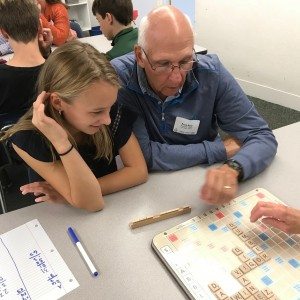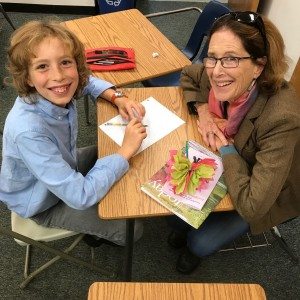The following includes excerpts from an article by John Chubb, former President of the National Association of Independent Schools (NAIS). We hosted an especially meaningful Grandparents’ and Grandfriends’ Day today (some pictures below, more on BCD’s Instagram), and I shared some of this when talking with several of our visitors about the core values of our school (after a tour of our new facilities earlier today). It affirms for me some of the most special qualities of our school culture, and I thought BCD parents may have an interest in reading it.
 If students do not feel emotionally connected to their school, if they do not feel that adults at the school care about them, if they don’t feel that teachers are trying to teach them, and not just the content, students simply do not put in the requisite effort—and they do not learn, at least not up to their potential.
If students do not feel emotionally connected to their school, if they do not feel that adults at the school care about them, if they don’t feel that teachers are trying to teach them, and not just the content, students simply do not put in the requisite effort—and they do not learn, at least not up to their potential.
The problem is widespread, but it is not universal. Some schools and teachers succeed in capturing the hearts and minds of their students. Researchers have been able to identify how schools successfully connect with their students and the attitudes and behaviors that connected students display. They have shown that students and schools that measure high on over one hundred indicators do better academically—standardized test scores, high school graduation, college matriculation—than students and schools that score low. This relationship holds regardless of the backgrounds of students.
 In a recent survey, employing over one hundred indicators for student respondents, NAIS schools posted engagement scores that were higher than public school scores by statistically significant amounts.
In a recent survey, employing over one hundred indicators for student respondents, NAIS schools posted engagement scores that were higher than public school scores by statistically significant amounts.
The differences were affective, such as:
“I feel supported by the administrators, teachers, and counselors at this school.”
“I feel comfortable being myself at this school.”
“I am an important part of my school community.”
“I care about this school.”
 Differences were also evident in classroom practice:
Differences were also evident in classroom practice:
“Teachers engage me in classroom discussions.”
“My school emphasizes very much: understanding information and ideas for classes (35 percent of public school students agreed “very much” with this statement, compared to 69 percent of NAIS students), and “analyzing ideas in depth for classes” (22 percent of public school students agreed “very much,” compared to 60 percent of NAIS students).”
“During this school year, how often have you received feedback from teachers on assignments or other class work” (37 percent of public school students responded “often,” compared to 67 percent of NAIS students).
 Differences were also clear schoolwide:
Differences were also clear schoolwide:
“There is at least one adult in this school who knows me well.”
“My school emphasizes participating in school events and activities.
“My opinions are respected in this school.”
“I am encouraged to build positive relationships with students of different backgrounds.”
The results validate decisions of hundreds of thousands of families who choose independent schools for the positive—and engaging—learning environment that the schools provide. Families want their children to love their schools and to be  loved back in return. They want their children to be taught to think and create, not just master. They want them to become good and not just smart. In fairness, all educators want schools that share these attributes. For reasons inherent to independence, beginning with the freedom to be mission-driven, our schools have shown more success promoting engagement, which in turn promotes learning.
loved back in return. They want their children to be taught to think and create, not just master. They want them to become good and not just smart. In fairness, all educators want schools that share these attributes. For reasons inherent to independence, beginning with the freedom to be mission-driven, our schools have shown more success promoting engagement, which in turn promotes learning.
BCD is a NAIS member school
 I am grateful for the love of our children that was collectively – by teachers, parents, grandparents, and grandfriends alike – expressed today. It was a joy to see everyone so happy and to witness the emotional connections between the many members of our vibrant and caring community.
I am grateful for the love of our children that was collectively – by teachers, parents, grandparents, and grandfriends alike – expressed today. It was a joy to see everyone so happy and to witness the emotional connections between the many members of our vibrant and caring community.
